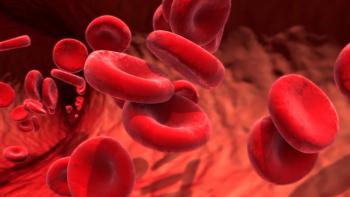
New Technology Improves Fibroid Symptoms Even at 2-Year Follow-Up
Radiofrequency volumetric thermal ablation for uterine fibroids is associated with a significant reduction in symptom severity and with improvements in quality of life even at 2 years’ post treatment.
Women with symptomatic uterine fibroids who underwent radiofrequency volumetric thermal ablation (RFVTA) experienced a significant reduction in the severity of symptoms and saw improvements in health-related quality of life 24 months after undergoing treatment, according to the results of the Halt Trial.1
Researchers, led by Richard S. Guido, MD, of the University of Pittsburgh Medical Center, wrote that the results of this study show that “the improvement in symptoms and the increase in the patients’ quality of life are durable for at least a period of 2 years.”
Guido and colleagues reported updated results of the Halt Trial, a prospective, multicenter, outpatient trial that examined the use of RFVTA for treatment of uterine fibroids in 124 premenopausal women with confirmed heavy menstrual bleeding. All of the women were assigned to undergo RFVTA, which delivers monopolar radiofrequency energy to tissue using a handheld device. The women served as their own controls.
“The patients in our study showed significant improvement in their symptom severity and health-related quality of life from baseline to 3 months post treatment,” the researchers wrote. “This was sustained over 2 years, accompanied by a low rate of re-intervention.”
Although results indicated that symptom severity was reduced the most during the initial 3 months of follow-up, women continued to see improvements even at the 24-month follow-up mark. Overall, the change in symptom severity score was –35.7 points compared with baseline (P<.001).
Consistent improvements in health-related quality of life were also seen following RFVTA. Between baseline and 24-month follow-up, the quality-of-life score improved by 40.9 points, from a median of 37.3 at baseline to 79.3 at follow-up. The improvement in health-related quality-of-life scores was consistent across all of the categories assessed:
• Concern: improvement of 45.6 points.
• Activities: improvement of 41.9 points.
• Energy/mood: improvement of 39.6 points.
• Control: improvement of 39.1 points.
• Self-consciousness: improvement of 42.0 points.
• Sexual function: improvement of 29.2 points.
The rate of re-intervention was 4.8%, with 6 women having to undergo surgical re-intervention for fibroid-related bleeding. The researchers wrote that as more new technologies become available for the treatment of benign gynecological conditions, it is important that physicians track outcomes to “confirm the durability of the treatment,” the researchers concluded.
Pertinent Points:
- Radiofrequency volumetric thermal ablation significantly improved symptom severity of uterine fibroids.
- The procedure successfully reduced symptoms with a low rate of surgical re-intervention necessary among patients.
References:
1. Guido RS, Macer JA, Abbott K, et al. Radiofrequency volumetric thermal ablation of fibroids: a prospective, clinical analysis of two years’ outcome from the Halt trial. Health Qual Life Outcomes. 2013;11:139-146.
Newsletter
Get the latest clinical updates, case studies, and expert commentary in obstetric and gynecologic care. Sign up now to stay informed.










